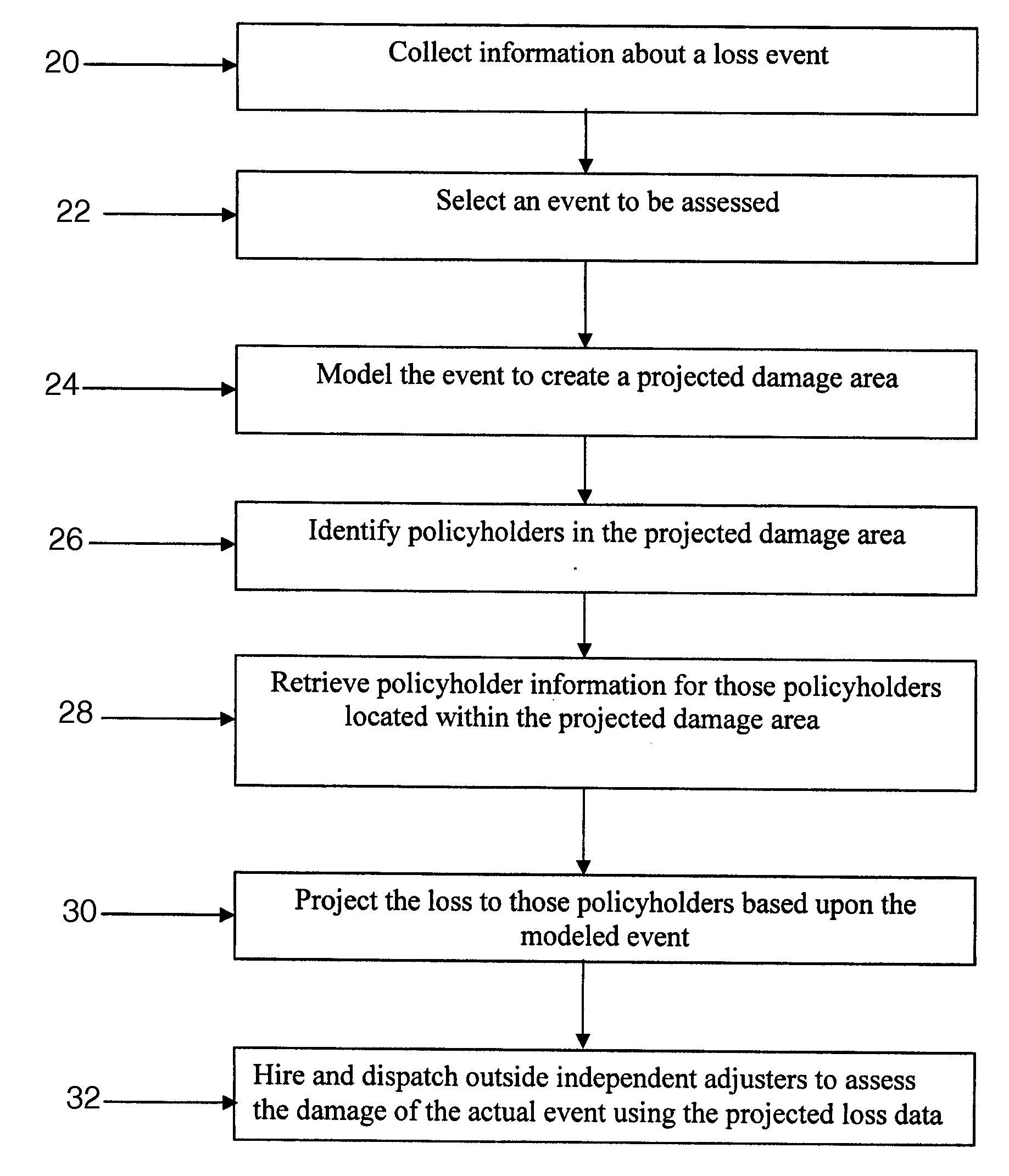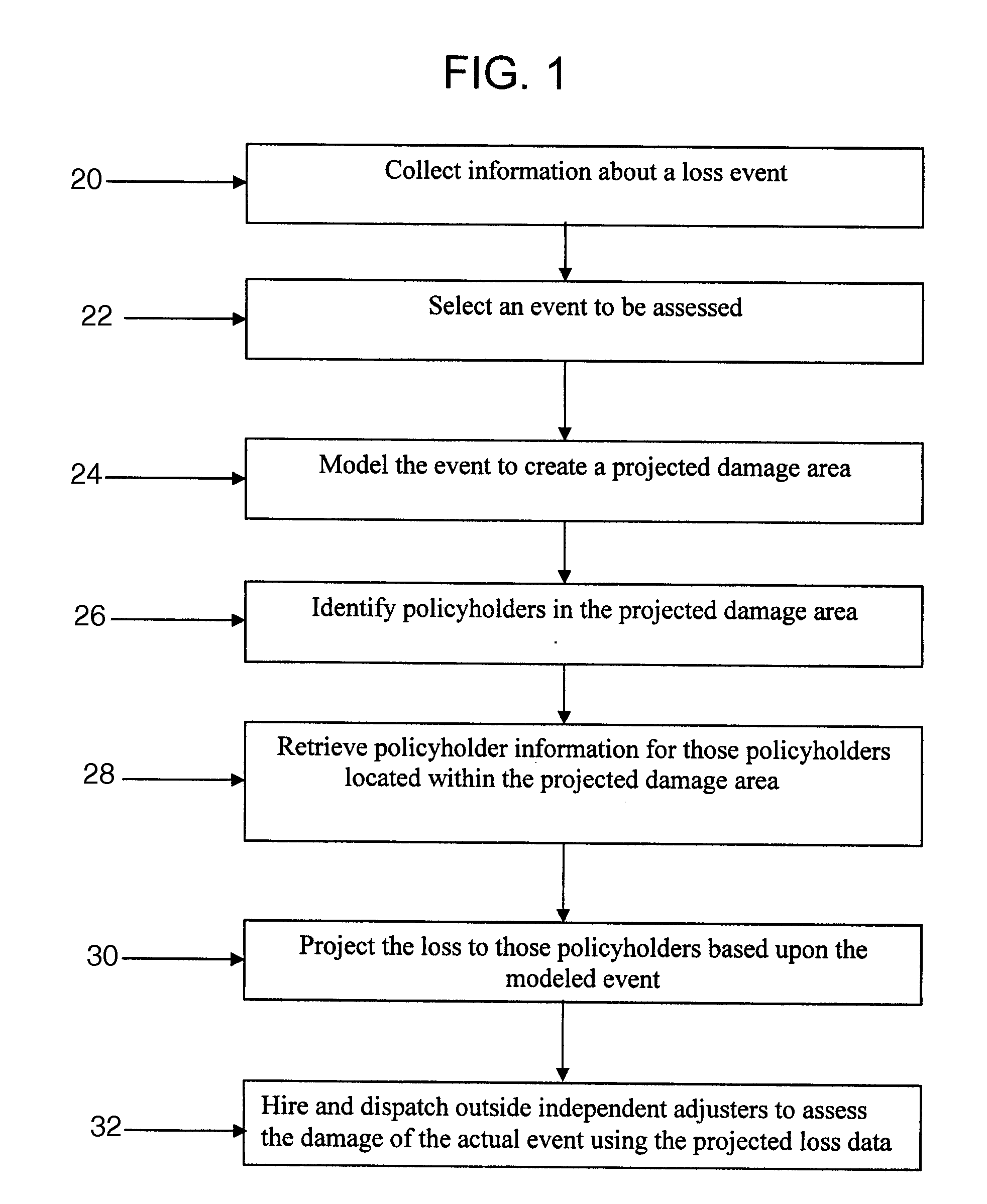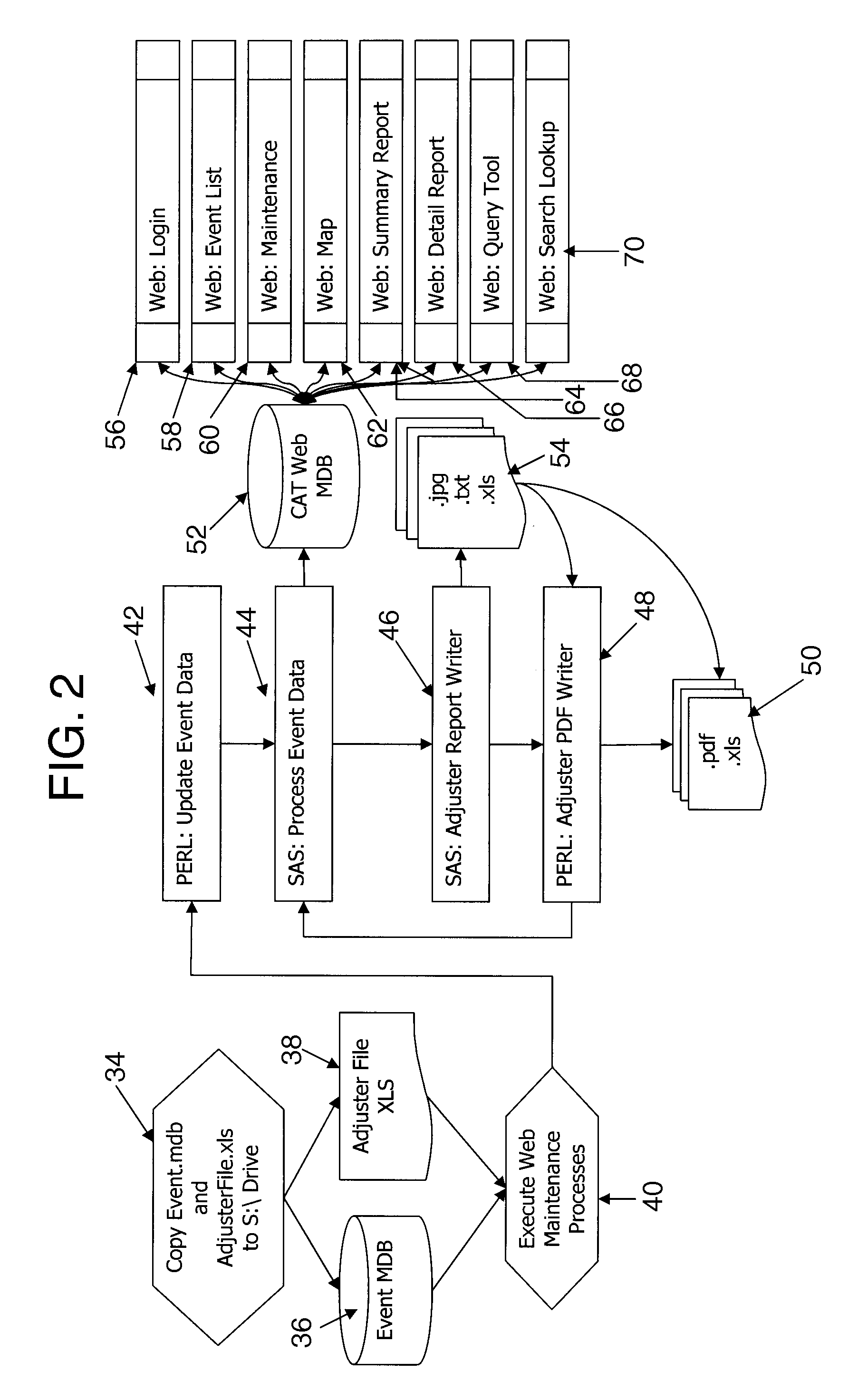Method and system for projecting catastrophe exposure
a projecting system and catastrophe technology, applied in the field of projecting financial exposure, can solve the problems that the claim processing ability of insurance companies is hampered, and achieve the effect of reducing the difficulty of insurance companies assessing their liabilities
- Summary
- Abstract
- Description
- Claims
- Application Information
AI Technical Summary
Benefits of technology
Problems solved by technology
Method used
Image
Examples
Embodiment Construction
[0025]The present invention is a method for reporting projected catastrophe exposure with sufficient lead-time, for example, to help an insurance carrier hire and dispatch a sufficient number of outside independent adjusters in the event of a loss event. FIG. 1 is a flow chart illustrating steps of an embodiment of a method for report projected catastrophe exposure. In a first step 20, the insurance carrier collects information of the loss event. The loss event can be a natural disaster such as a flood, hurricane, or earthquake, or can be a man-made event such as a car accident or fire. In a second step 22, the insurance carrier selects the event to assess the loss exposure it will cause. In a third step 24 of the method, the selected event is modeled using any suitable catastrophe modeling system to create a projected damage area.
[0026]The modeling step 24 is preferably performed using a computing environment. Catastrophe modeling can use computer technology to help insurers, reins...
PUM
 Login to View More
Login to View More Abstract
Description
Claims
Application Information
 Login to View More
Login to View More - R&D
- Intellectual Property
- Life Sciences
- Materials
- Tech Scout
- Unparalleled Data Quality
- Higher Quality Content
- 60% Fewer Hallucinations
Browse by: Latest US Patents, China's latest patents, Technical Efficacy Thesaurus, Application Domain, Technology Topic, Popular Technical Reports.
© 2025 PatSnap. All rights reserved.Legal|Privacy policy|Modern Slavery Act Transparency Statement|Sitemap|About US| Contact US: help@patsnap.com



